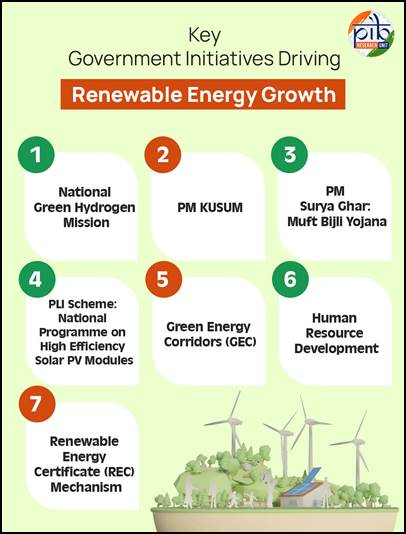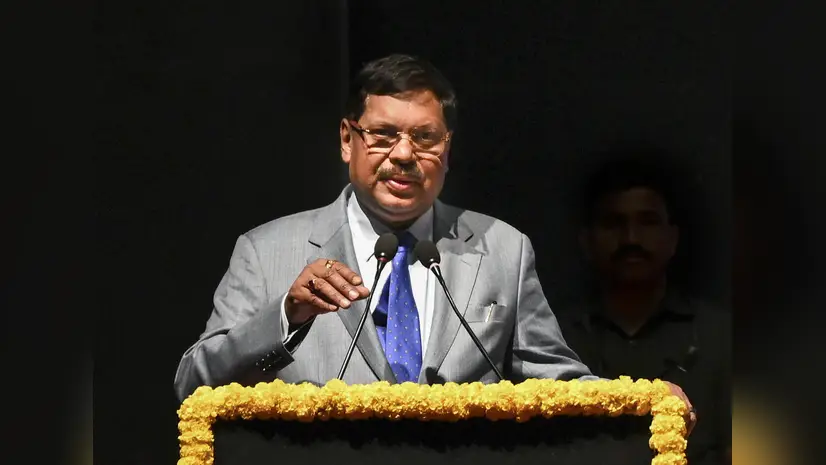- Courses
- GS Full Course 1 Year
- GS Full Course 2 Year
- GS Full Course 3 Year
- GS Full Course Till Selection
- Answer Alpha: Mains 2025 Mentorship
- MEP (Mains Enrichment Programme) Data, Facts
- Essay Target – 150+ Marks
- Online Program
- GS Recorded Course
- Polity
- Geography
- Economy
- Ancient, Medieval and Art & Culture AMAC
- Modern India, Post Independence & World History
- Environment
- Governance
- Science & Technology
- International Relations and Internal Security
- Disaster Management
- Ethics
- NCERT Current Affairs
- Indian Society and Social Issue
- NCERT- Science and Technology
- NCERT - Geography
- NCERT - Ancient History
- NCERT- World History
- NCERT Modern History
- CSAT
- 5 LAYERED ARJUNA Mentorship
- Public Administration Optional
- ABOUT US
- OUR TOPPERS
- TEST SERIES
- FREE STUDY MATERIAL
- VIDEOS
- CONTACT US
IRENA’s Renewable Energy and Jobs 2024 Annual Review
IRENA’s Renewable Energy and Jobs 2024 Annual Review

In 2023, India's renewable energy sector reached an estimated 1.02 million jobs, according to the 2024 Annual Review by the International Renewable Energy Agency (IRENA). This report highlights India's role in the global renewable energy workforce, which grew to 16.2 million from 13.7 million in 2022, signaling significant job creation and sustainable growth.
Overview of IRENA's Renewable Energy and Jobs Series
The IRENA Renewable Energy and Jobs series provides insights into employment trends within the renewable energy sector globally, focusing on:
- Employment across various renewable technologies.
- The influence of public and private sector policies on job creation.
- Emphasis on decent work to ensure an equitable energy transition. The series also examines gender equity, energy access, and the socio-economic impacts of renewable energy, with projections extending to 2050.
Key Findings from the 2024 Report
- 1.02 million jobs in India’s renewable energy sector as of 2023.
- Hydropower: Largest employer with approximately 453,000 jobs (20% of global total).
- Solar PV: Employed around 318,600 individuals, with significant additions in capacity and installations.
- Wind Power: Provided around 52,200 jobs and ranked fourth globally, with renewed growth in capacity.
- Employment breakdown includes:
- Hydropower: 453,000
- Solar PV: 318,600
- Wind Power: 52,200
- Liquid Biofuels: 35,000
- Solid Biomass: 58,000
- Biogas: 85,000
- Solar Heating and Cooling: 17,000
Major Government Initiatives

India is advancing its renewable energy agenda through several key initiatives:
1. National Green Hydrogen Mission
- Approval Date: January 4, 2023.
- Financial Outlay: ₹19,744 crore.
- Objective: Establish India as a global hub for green hydrogen production and usage.
- Impact: Expected to create numerous jobs and foster innovation in clean energy technologies.
2. PM-KUSUM Scheme
- Launched: March 2019; scaled up in January 2024.
- Components:
- Setting up decentralized solar power plants.
- Installing stand-alone solar pumps.
- Solarization of existing grid-connected pumps.
- Job Creation: Estimated to generate 7.55 lakh job-years for skilled and unskilled workers.
3. PM Surya Ghar: Muft Bijli Yojana
- Launch Date: February 15, 2024.
- Objective: Provide free electricity via subsidized rooftop solar panels.
- Projected Benefits:
- Free electricity for households.
- Savings of ₹75,000 crore annually for the government.
- Creation of approximately 17 lakh direct jobs across multiple sectors.
4. PLI Scheme for Solar PV Modules
- Outlay: ₹24,000 crore.
- Objective: Achieve large-scale manufacturing of high-efficiency solar PV modules.
- Impact: Attract cutting-edge technology and create job opportunities while reducing import dependence.
5. Green Energy Corridors (GEC)
- Aims to develop intra-state transmission systems for renewable energy.
- Enhances grid stability and facilitates efficient energy transfer.
6. Human Resource Development (HRD) Scheme
- Focuses on institutionalizing education and training in renewable energy.
- Aims to develop a skilled workforce to support India’s energy transition.
7. Renewable Energy Certificate (REC) Mechanism
- A market-based instrument promoting renewable energy and supporting compliance with Renewable Purchase Obligations (RPO).
Annual Electricity Generation from Renewable Sources:
India's dedication to renewable energy is evident in the annual electricity generation trends over recent years.
Here’s a breakdown for the last four years:
|
Year |
Renewable Energy Electricity Generation (in Billion Units) |
Percentage Share of RE in Total Generation |
|
2021-22 |
330.03 |
22.12% |
|
2022-23 |
372.39 |
22.92% |
|
2023-24 |
364.60 |
20.96% |
|
2024-25 (Up to May 2024) |
61.84 |
19.19% |
Conclusion
India's renewable energy sector is experiencing robust growth, with approximately 1.02 million jobs reported in 2023. Government initiatives such as the National Green Hydrogen Mission, PM-KUSUM, PM Surya Ghar, and the PLI scheme are crucial for expanding renewable technologies and enhancing skills. By emphasizing job creation alongside its energy transition, India is positioning itself as a global leader in renewable energy, fostering economic growth and contributing to a sustainable future.
Must Check: Best IAS Coaching In Delhi
UPSC Prelims Result 2024 Out: Expected Cut Off & Other Details, UPSC Prelims 2024 Answer with Explanation, Daily Prelims Quiz, Daily Current Affairs, MONTHLY CURRENT AFFAIRS TOTAL (CAT) MAGAZINE, Best IAS Coaching Institute in Karol Bagh, Best IAS Coaching Institute in Delhi, Daily Mains Question Answer Practice, ENSURE IAS UPSC Toppers, UPSC Toppers Marksheet, Previous Year Interview Questions, UPSC Syllabus




